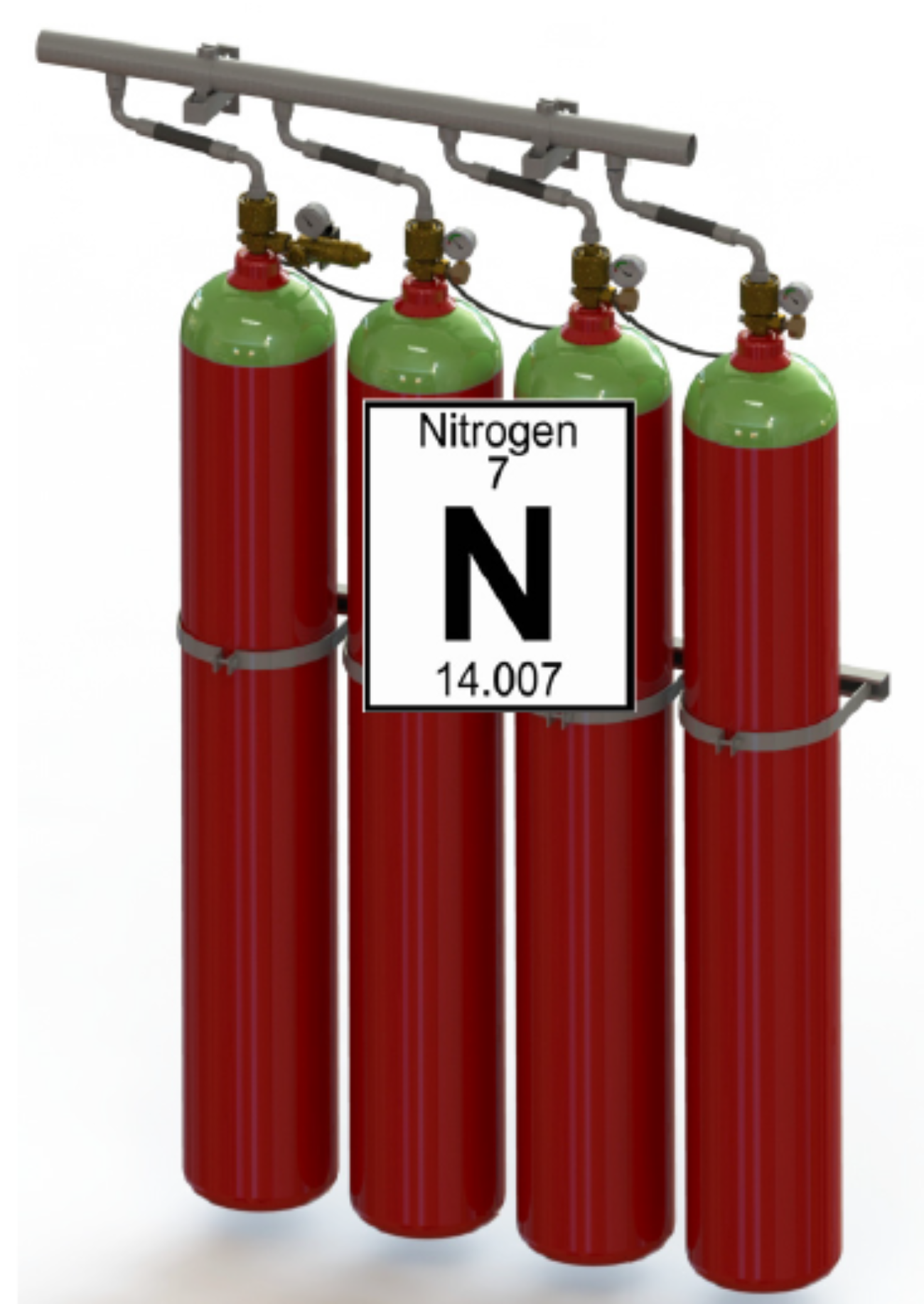A Nitrogen gas extinguishing system, also known as a IG-100, is a type of fire suppression system commonly used in areas where the use of water or traditional firefighting agents is not suitable. It is designed to protect sensitive equipment, valuable assets, or areas where water damage needs to be avoided.
The system works by releasing a flood of nitrogen gas into the protected space. Nitrogen is an inert gas, which means it does not support combustion. By displacing the oxygen in the environment, it reduces the oxygen concentration below the level required to sustain a fire, effectively extinguishing it.
These systems are typically used in places such as data centres, server rooms, comms rooms, archives, museums, control rooms, or any other location where water-based firefighting methods may cause extensive damage. Nitrogen gas extinguishing systems are designed to quickly suppress fires without leaving any residue or causing harm to sensitive equipment or materials.
It's worth noting that the design and installation of Nitrogen gas extinguishing systems should be carried out by professionals with expertise in fire protection systems to ensure they are properly configured and meet safety standards.
While nitrogen gas is just one of several options for inert gas systems, it has certain benefits over other gases commonly used in gas extinguishing systems.
Here are a few advantages of using nitrogen gas:
Availability and Cost-Effectiveness: Nitrogen is abundantly available in the Earth's atmosphere, making it a cost-effective choice for gas extinguishing systems. It can be easily sourced and does not require specialized production processes.
Non-Toxic and Non-Ozone Depleting: Nitrogen gas is non-toxic and does not pose health risks to humans. It is also environmentally friendly and does not contribute to ozone depletion, making it a safer and more sustainable option.
Widely Accepted and Approved: Nitrogen gas extinguishing systems have been extensively studied and approved for use by various regulatory bodies and industry standards. The system's effectiveness and safety have been well-documented and accepted globally.
Non-Conductive: Nitrogen gas is electrically non-conductive, which means it does not conduct electricity. This property is especially crucial in areas with sensitive electrical or electronic equipment, where the use of water-based fire suppression methods could cause further damage.
No Residue or Cleanup Required: Nitrogen gas does not leave any residue after discharge. Unlike some other gas extinguishing agents, there is no need for extensive cleanup or restoration of the protected area following its activation.
It's important to note that the choice of an inert gas for a gas extinguishing system depends on various factors, including the specific requirements of the protected area, applicable regulations, and expert recommendations. Consulting with one of our design team professsionals can help you determine the most suitable inert gas for your particular application.
Do you have a technical question?
Call us on 01628 902107 or email [email protected]
